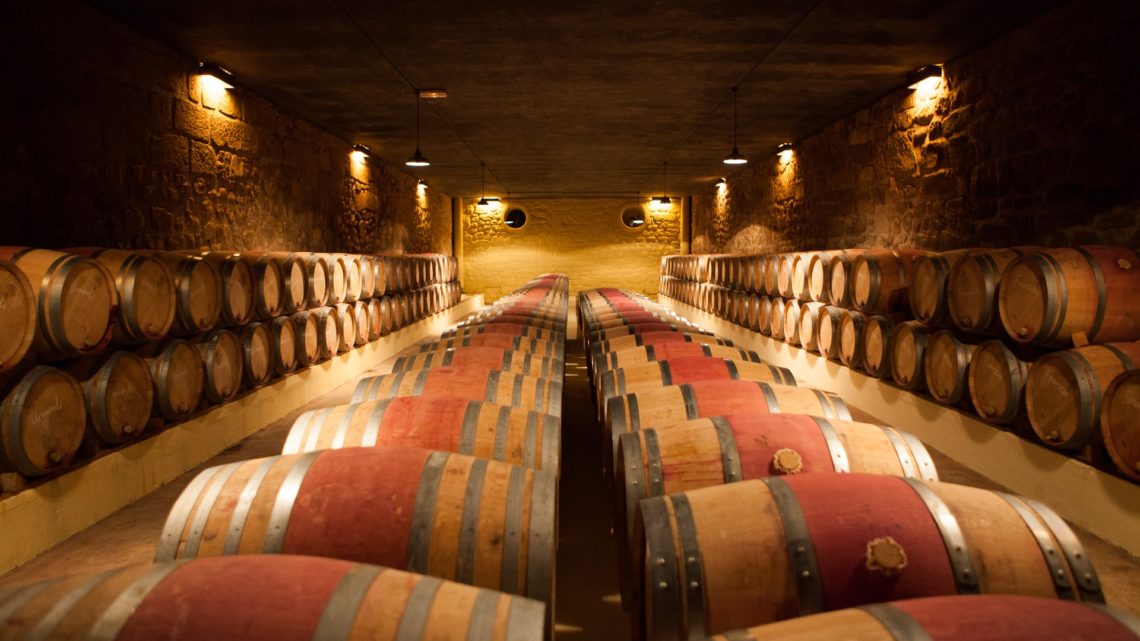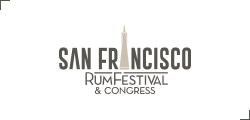When Was Rum Consumed for the First Time?

The History Behind the Sugar Cane Spirit
The generally accepted definition of rum describes it as a spirit obtained only by alcoholic fermentation and distillation of sugar cane juice, molasses, or syrups; the result is then aged in oak barrels. Its production must be carried out in a way that the product has the aroma and flavor from the named materials.[1]
Although the origins of rum are plenty uncertain, followed by the shadow of colonialism, there is no doubt that the spirit has given rise to countless legends and traditions around the world.
Table of Contents
- The origin of sugar cane (Saccharum Officinarum)
- Barbados’s “Kill-Devil”
- Brazil’s Cachaça, a primitive and rough spirit
- Sugar cane liquor in Martinique
- Asia as the birthplace of rum
- Other theories
The Origin of Sugar Cane (Saccharum Officinarum)
The history of rum begins with sugar cane, a tall and sharp-edged grass originally from Papua New Guinea, where it first appeared around 4,000 B.C. Several species also flourished throughout Southeast Asia, from the Indo-Burmese border region to central China and the Pacific islands. Later on, traders carried the plant to Africa, India, and Spain, respectively.
In 325 B.C. Alexander the Great made the most notable discovery of sugar cane through his military expedition. He pointed out the plant “brings forth honey without the help of bees.”[2] His soldiers produced “cane honey” by evaporation of cane juice, following a procedure from Bengal, northeast India. This can be considered the first description of sugar cane syrup.
It is said that Alexander the Great would have taken the plant to Egypt. In the eleventh and twelfth centuries, Arabs introduced sugar to the Mediterranean region of Europe. Traders made huge profits in the sugar commerce and introduced the plant to the Iberian Peninsula, Cyprus, and Sicily.
Eventually, Europeans began to grow sugar cane by themselves without Arab control. The Portuguese were the first to establish sugar cane plantations in their African colonies and the Azores. They had discovered the Madeira Islands, Cape Verde, and the Canary Islands. From Sicily, Prince Henry the Navigator took the plant to Madeira in 1419.
During the 1400s, Caribbean islands were also colonized, all of them with a suitable climate for growing sugar cane. However, the labor force in those places was insufficient and difficult to control, so that African slaves were bought from Arab traders to work the land. Here is when the unfortunate link between sugar and slavery was born.
Christopher Columbus, whose father-in-law was a Madeira sugar planter, introduced sugar cane to the Caribbean in 1493. On his second trip across the Atlantic, he brought live sugar cane seedlings to La Hispaniola (Dominican Republic). Everything indicates that this hybrid came from the Canary Islands, although some believe that it was from the Spanish town of Motril (Granada).
The sugar grew successfully, and colonists started to establish plantations over the next two decades in Mexico, Cuba, Jamaica, and Puerto Rico. On the other side, the Portuguese planted cane on the Brazilian coast and brought in sugar presses and copper boiling vats from home. They had enough technical knowledge to use them thanks to their experience in Africa.
It is believed that the first plantation was not put into production until 1501, and there is evidence that there were cane fields and sugar mills on La Hispaniola by 1516, at Porto Seguro (Brazil) by 1520, and in Jamaica, Cuba, and Puerto Rico by 1595.[3]
At the time, the amount of molasses obtained from the sugar refining process was considerable. Molasses sometimes was sold as a sweetener, but at some point, plantation slaves decided to experiment with it and fermented it into alcohol. Later, people who knew the household technique of distilling applied it, and a crude version of rum was born.
Guarapo
In 1598, Dr. John Layfield, a scholar that participated in an English military expedition conducted against Puerto Rico, was the second to report that the colonists there used to drink a fermented beverage called “guarapo” made of molasses and spices. Thus, guarapo seems to be the first specific name for alcoholic drinks made of sugar cane juice.
This is the reason why the modern-day version of the history of rum states that the spirit was first distilled on the sugar cane plantations of the Caribbean in the early seventeenth century. However, in the author Fred Minnick’s view, it was not until the Persians and Arabs perfected the refining of sugar that sugar cane’s origins and benefits were studied in detail.[2]
In the fourteenth century, Marco Polo described a “very good wine of sugar” that was offered to him in what is today Iran. Hence, where and when the first sip of rum was produced and consumed is part of a long debate that remains until today. Let’s now take a look at some of the more supported theories.
Barbados’s “Kill-Devil”
The main theory of the origins of the rum takes place in the West Indies, specifically in Barbados. In the mid-seventeenth century, the sugar industry started to grow. An English planter named James Drax arrived on the island in 1627. He cultivated sugar cane, and quickly amassed an estate of 850 acres, being the first to build island windmills.
Decades later, the word “rum” was mentioned for the first time. A report from a Royalist refugee, named Richard Ligon, said that there was a famous drink on the island called “Kill-Devil”. It was “a sugar cane distilled, hot, hellish, and terrible liquor (…), made of the skimmings of the Coopers that boil the sugar.”[4]
“If the stills are at fault, the kill-devil cannot be made.”
Ligon’s in “A True and Exact History of the Island of Barbados”, published in 1657
Some documentation proves that by 1654 the word “rum” was already in common use when the General Court of Connecticut ordered the confiscations of Barbados liquors, commonly called “rumbullion” [great tumult or uproar], “rumbustion”, and kill devil.” Nevertheless, some partisans and etymologists suggest the concept comes from an English and Dutch interpretation of the Romany word “rom”, defined as “excellent, high quality”.
The word was also mentioned in New England in 1657, when the General Court of Massachusetts declared the overproduction of alcohol, “known by the name of rumme, strong water, wine, brandy, etc.” Furthermore, a 1658 deed for the sale of the “Three Houses Plantation” was the first known official appearance of the word “rum” on any of the islands. This stated “four large mastrick cisterns for liquor for rum.”[1]
On the other hand, Barbados also claims to be home to the world’s oldest continuously produced rum, Mount Gay Rum. Some documentation suggests that a still house was producing rum in the Mount Gay distillery as early as 1663, but the first solid evidence dates to February 20, 1703, when a deed listed equipment transferred in a sale to include “two stone windmills (…). One boiling house with seven coppers, one curing house, and one still house.”[1]
Even though it cannot be assured that Barbados is really the birthplace of rum, there is strong evidence that it is the first place where rum as such was large-scale distilled and became a more refined drink.
Brazil’s Cachaça, a Primitive and Rough Spirit
Although Barbados claims the paternity of rum, some historians found that the first solid documentation about its origins is a 1552 report from Governor Tomé de Souza of Bahia in Brazil. This mentions that the slaves on sugar plantations were more willing to work if allowed to drink “cachaça, a Brazilian rum.”
Some historians also agree that in the 1620s rum production was developed in Brazil, taking into account the Portuguese’s influence, and from there the spirit found its way to Barbados along with sugar cane cultivation methods.
As a matter of fact, there is other evidence that proves the existence of rum in Brazil some years before Ligon’s publication: The George Marcgrave’s “Historia Naturalis Brasiliae” of 1648. Marcgrave calls the Brazilian rum “a beverage fit only for slaves and donkeys”, revealing that it had not been improved or merchandised in almost a hundred years.[5] This is the reason why it was not popular or widely known at the time.
Although it is true there are no conclusive records of rum distilling in the Caribbean in that era, some detractors of this theory argue that it is hard to believe that only the Portuguese used molasses or sugar cane juice to make rum. There were already hundreds of sugar plantations around the islands, and distillation was an everyday skill shared by colonists with locals.[3]
Sugar Cane Liquor in Martinique
The Dutch were experienced distillers and produced sugar on the Caribbean islands they owned. Consequently, it has been claimed that Dutch Jews in Martinique distilled some sort of liquor from sugar cane as early as 1550, even before Brazil.
Likewise, in 1650, the French cleric Jean-Baptiste Du Tertre brought a still to Martinique and experimented with it during his eight-year stay on the island. However, the production of rum did not succeed since the spirit was not a common beverage at the time, and its production methods were very primitive.
Explaining the above, we should not forget that before arriving in America, sugar cane was already known in Asia, Africa, and Europe where both the knowledge of winemaking and distillation were very advanced.
For instance, archeologists identified a 5,000 years old terracotta still in a museum in Taxila, Pakistan. This was a dome-lidded clay pot with a detachable spout that empties into a covered bowl. It had the essential elements of what later Arab chemists called alembic still. Shortly after the year 1000 A.D., Avicenna, and other alchemists improved the still, using the results as a base for medicines, perfumes, and alcoholic beverages.[3]
So, we should also consider the hypothesis that the origins of rum could be placed outside the Caribbean islands.
Asia as the Birthplace of Rum
The American journalist, Richard Foss, argues that people have known for at least 3,000 years that sugar cane yields a juice that can be fermented. Indeed, some scholars argue that the first written record of the plant’s cultivation and fermentation was in India.
Some others affirm that China created the first beverages using the fermentation of sugar cane juice, and then found its way around civilization. An example is “Brum”, a drink produced by the Malay people thousands of years ago.
Nevertheless, a manuscript called Manasollasa (The Book of the Happy State of Mind) from around 1800 B.C. includes a recipe for sugar cane beer made in India. Another manuscript from the same period describes two alcoholic drinks made with sugar cane: “soma” and “sura”.[3]
Sura was given to warriors to enhance their courage. Soma, a drink with beneficial properties, was reserved for the aristocracy. In the second case, there is no clear data that can tell us which methods or ingredients they used to prepare it, but both fermented drinks were primarily used for medicinal purposes.
Moreover, Vagbhata, an ancient Indian writer and Ayurvedic physician in the seventh century, mentioned two types of liqueurs called “Āsava” and “Ariṣṭa”. The former was prepared from wood-apple extract, sugar cane juice, and honey; the latter was made of soapberries and molasses. [6] “Shidhu”, produced by fermentation and distillation of sugar cane juice, is also a liquor described in other Sanskrit texts.
It is difficult to believe that rum is from India or China since there is no firm documentation that proves these beverages were distilled as such spirit. However, both Indian and Chinese cultures have been linked to sugar cane’s discovery for thousands of years, and their ancient people harvested this plant for food and to prepare alcoholic drinks. So, who can deny they make a primitive rum?
Other Theories…
Cyprus was a significant producer of sugar in the Middle Ages. The Polish Historian, Maria Dembinska stated in her book “Food and Drink in Medieval Poland: Rediscovering a Cuisine of the Past” that King Peter I of Cyprus brought “rum” with him as a gift for the other royal dignitaries at the Congress of Kraków held in 1364.
Dembinska’s research also suggests that “Cyprus rum” was often drunk mixed with an almond milk drink to prepare a drink called “Soumada”. Nonetheless, other historians claim that the alcoholic sugar drink described by Dembinska may not have the same characteristics as actual rum.
What makes it difficult to exactly know the place and date of the first rum production is the issue that all of these theories are separated by centuries and even thousands of years. Likewise, throughout history, there have been several beverages made from sugar cane by-products that are not necessarily defined as rum. However, those drinks could answer how the spirit has evolved through the centuries.
References
[1] Curtis, Wayne. And a bottle of rum: A history of the new world in ten cocktails. Broadway Books, 2009.
[2] Minnick, Fred. Rum Curious: The Indispensable Tasting Guide to the World’s Spirit. Voyageur Press, 2017.
[3] Foss, Richard. Rum: A Global History.The Edible Series. Reaktion Books Ltd., 2012.
[4] Ligon, Richard. A true and exact history of the island of Barbados. Hackett Publishing, 2011.
[5] Goldstein, Darra, and Sidney Mintz. The Oxford companion to sugar and sweets. Oxford University Press, 2015.
[6] Hiemstra, Gabe. Asava, Āsava, Āśava, Ashava, Āsāva: 27 definitions. Wisdom Library.
Featured image: Wooden barrels | Source: Espada/jlRE8FK3RLw/unsplash.com












